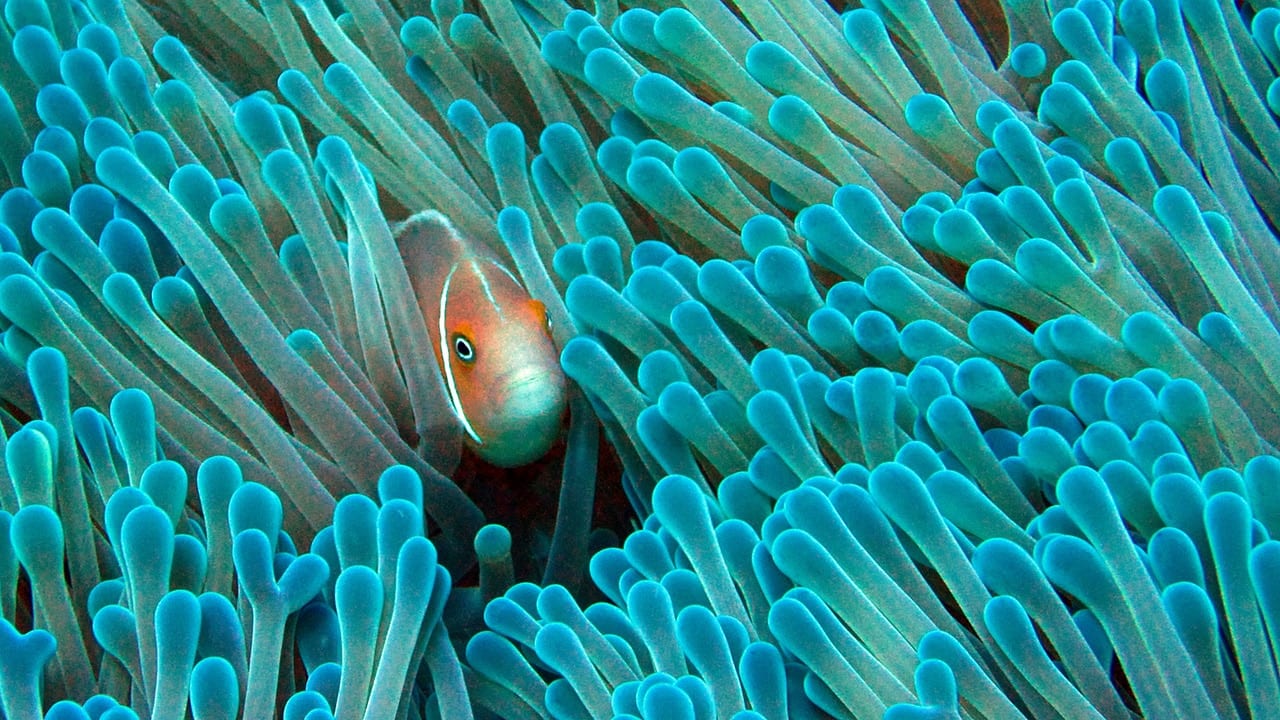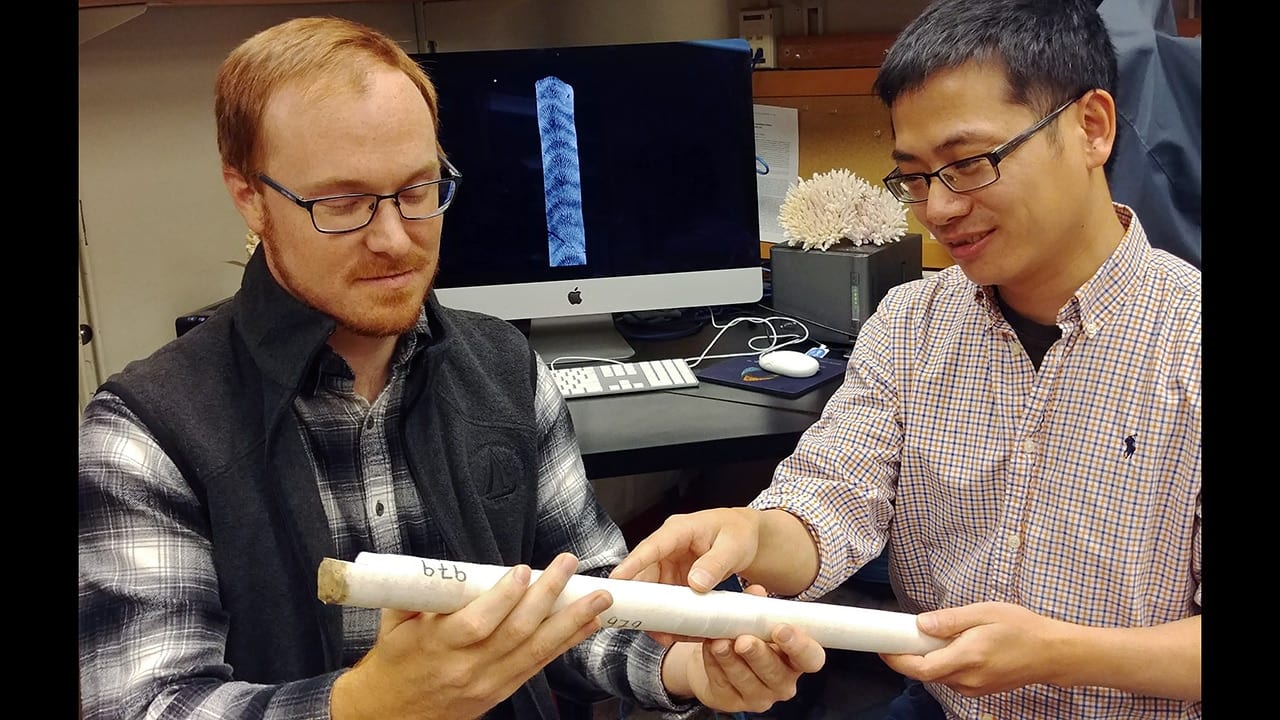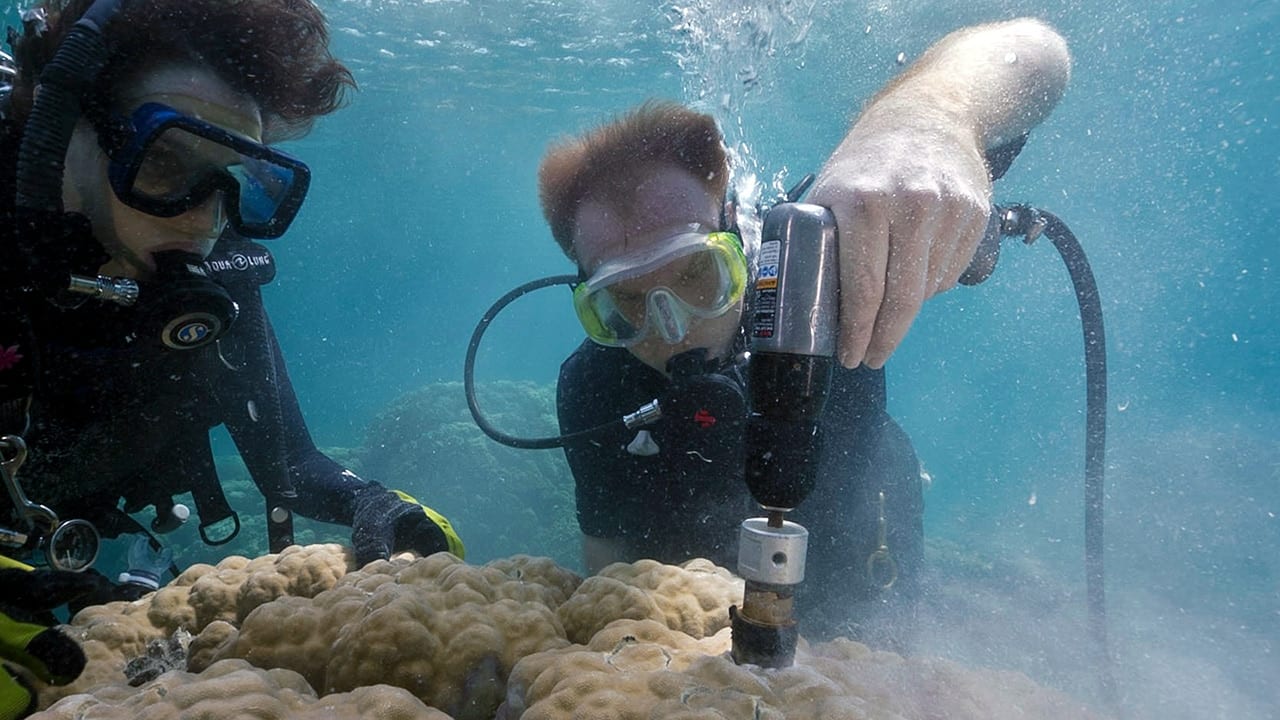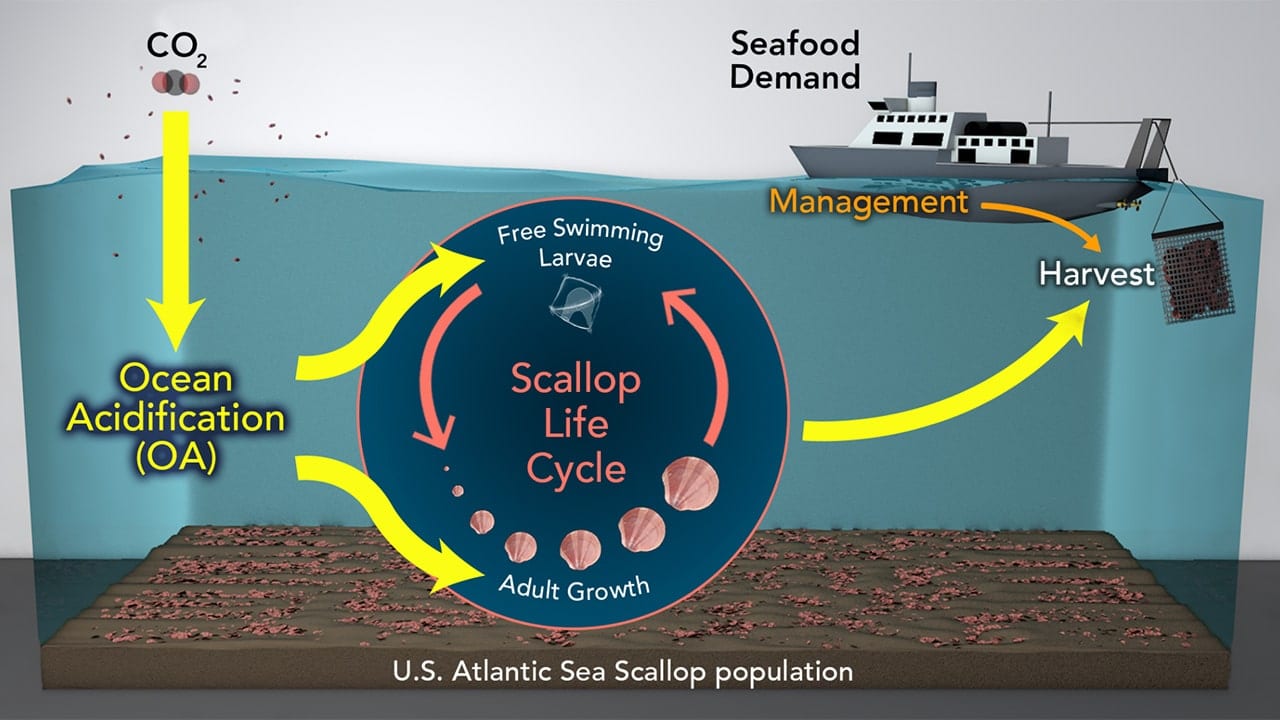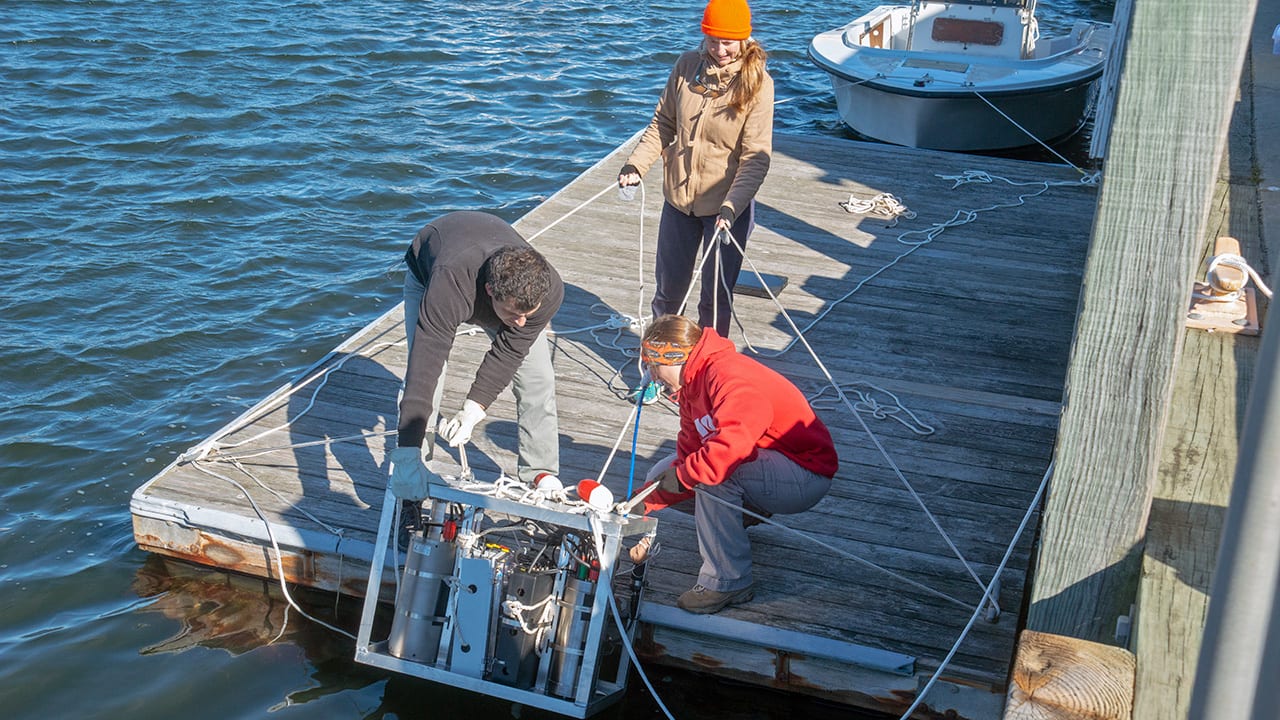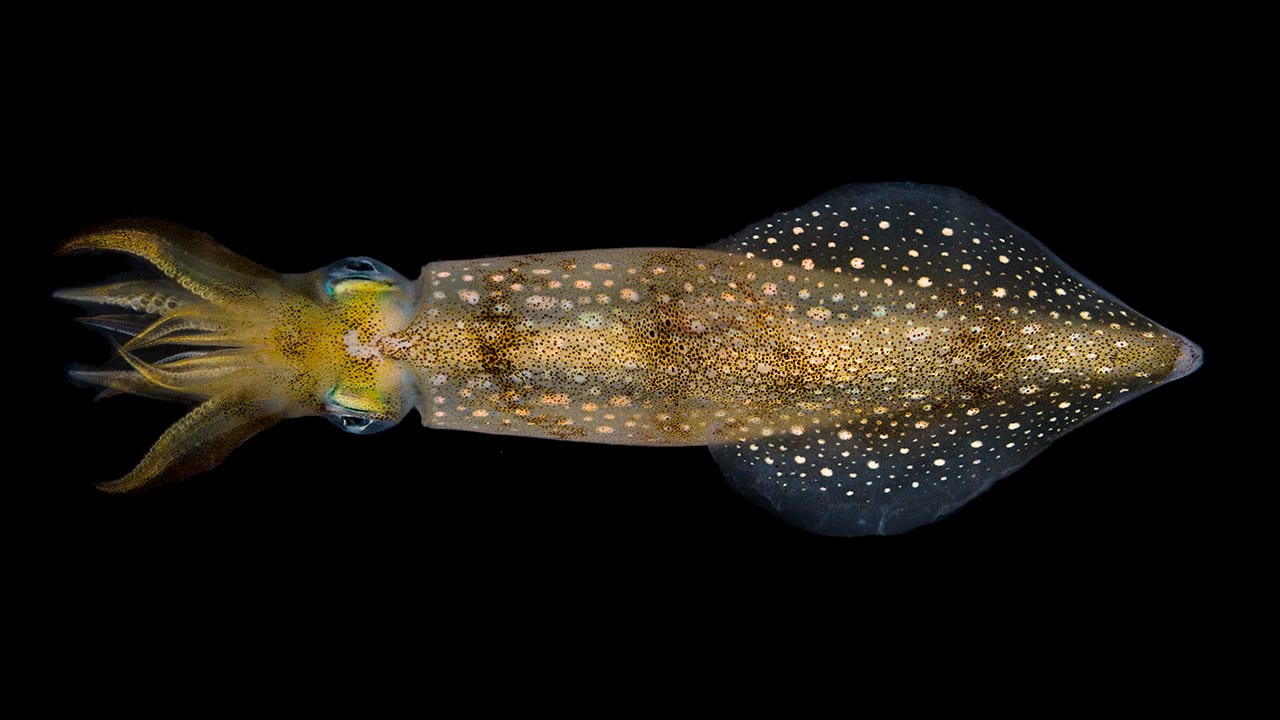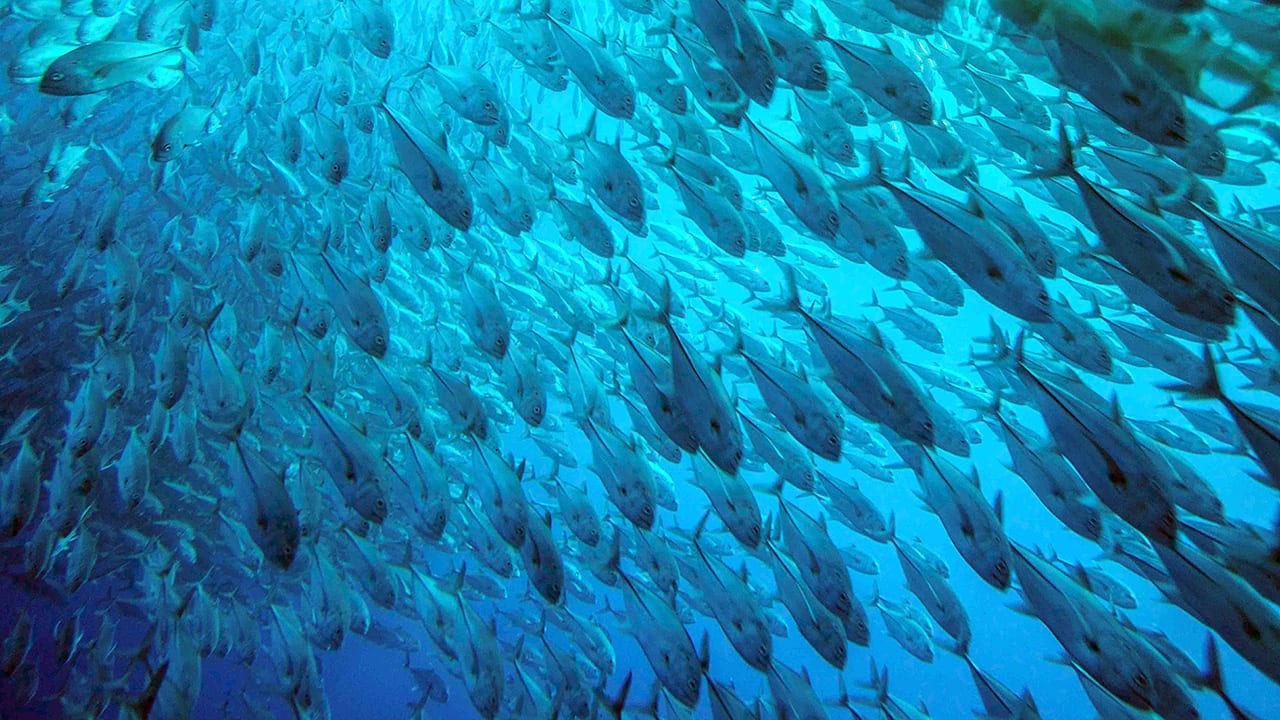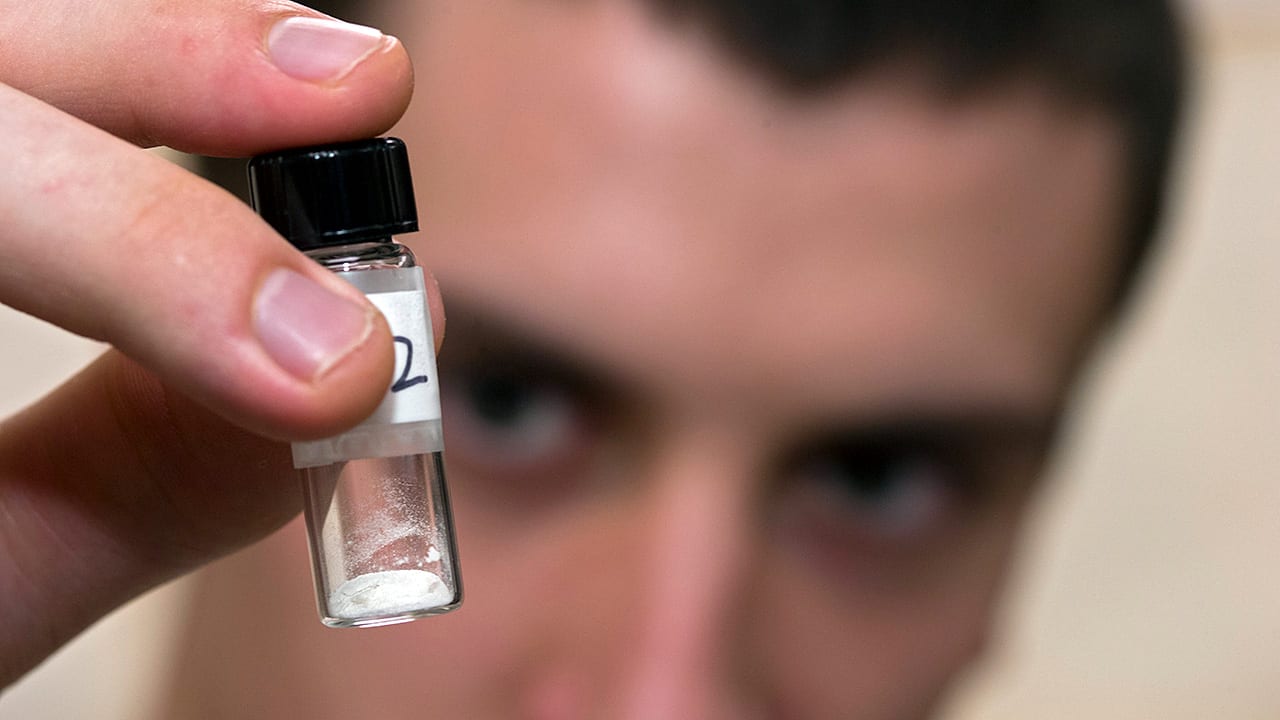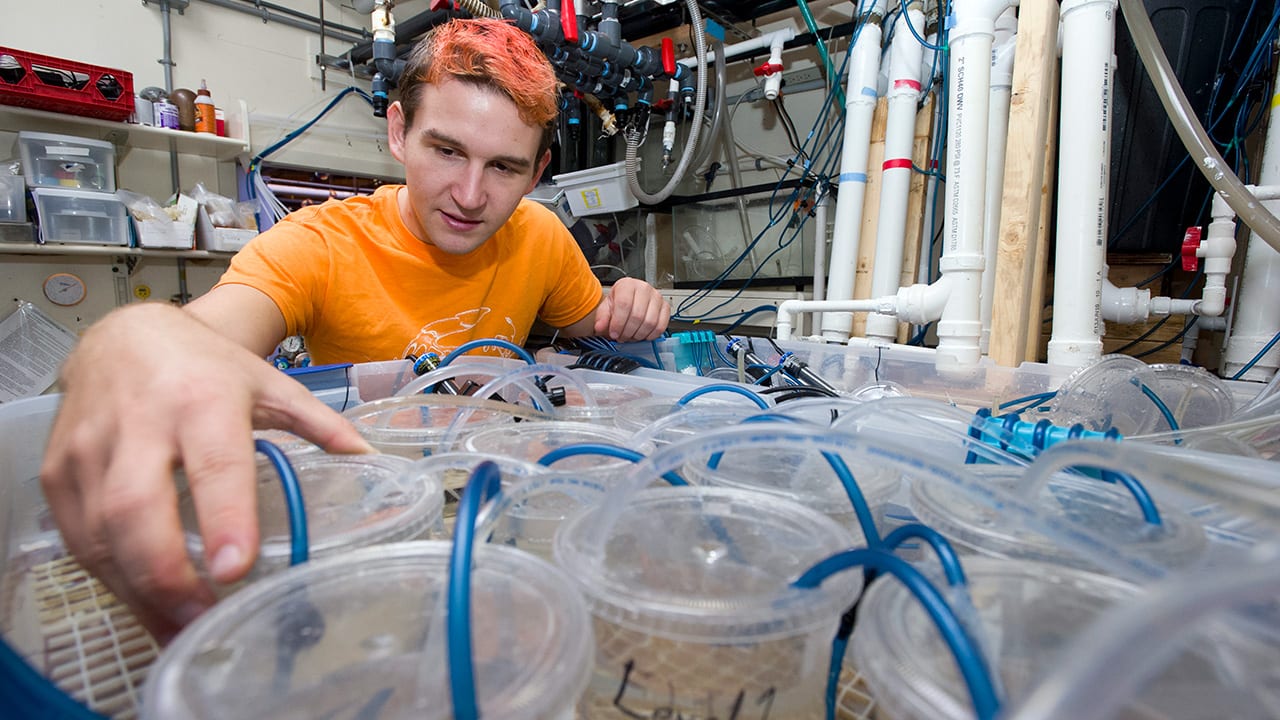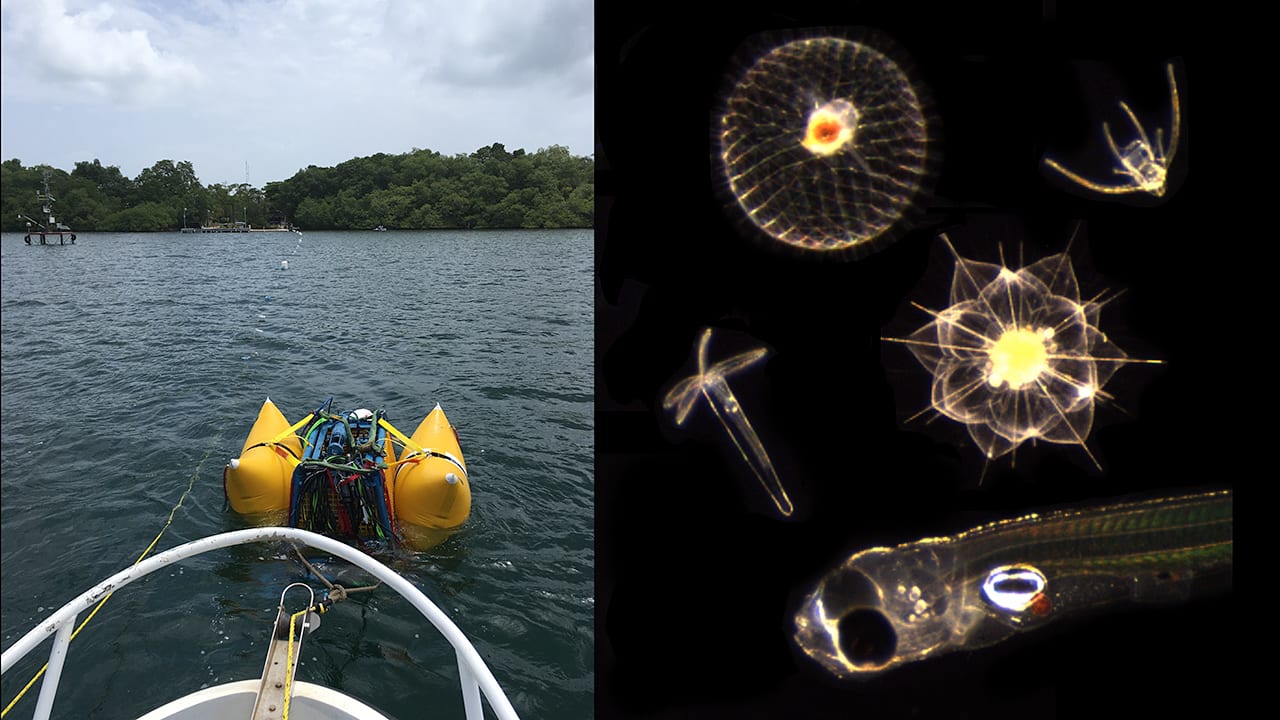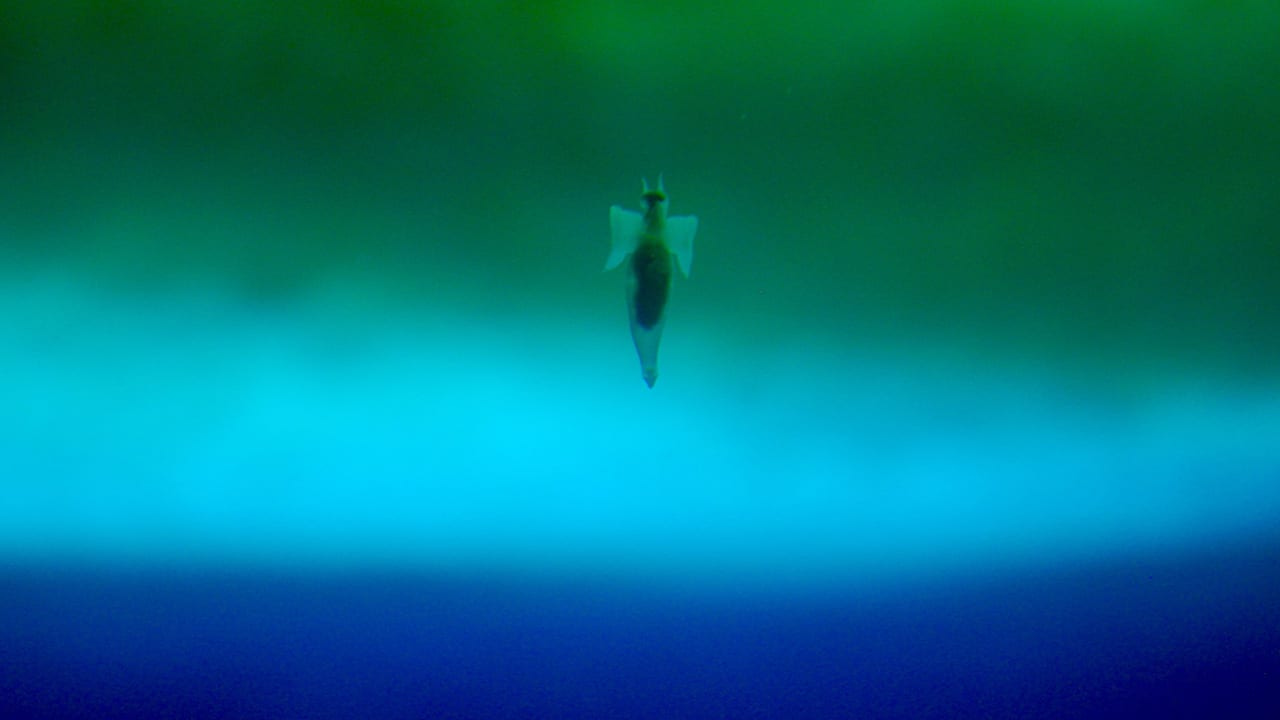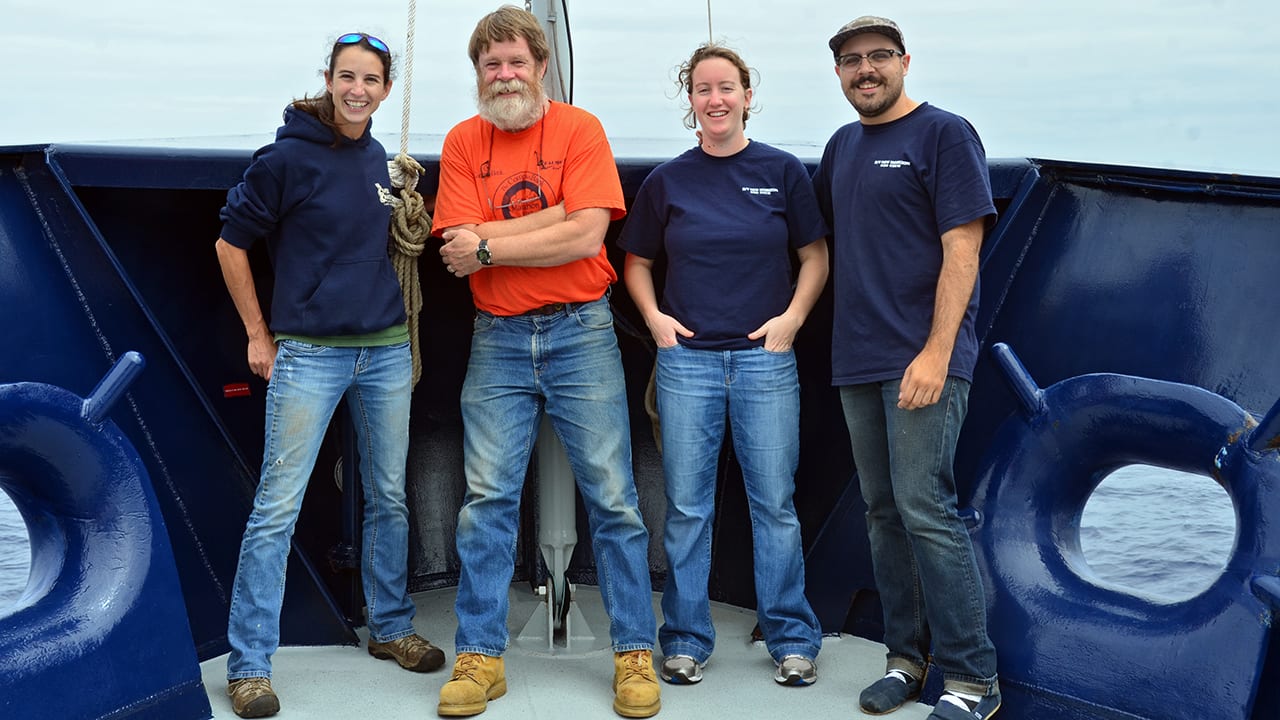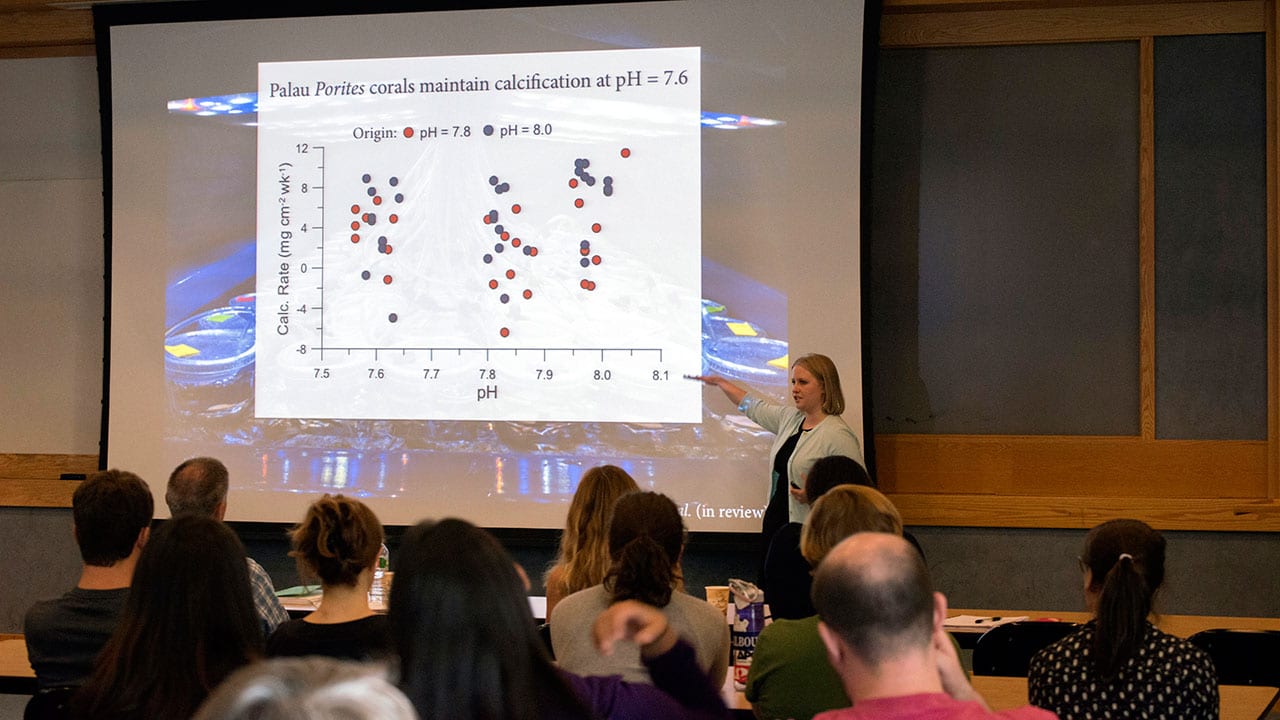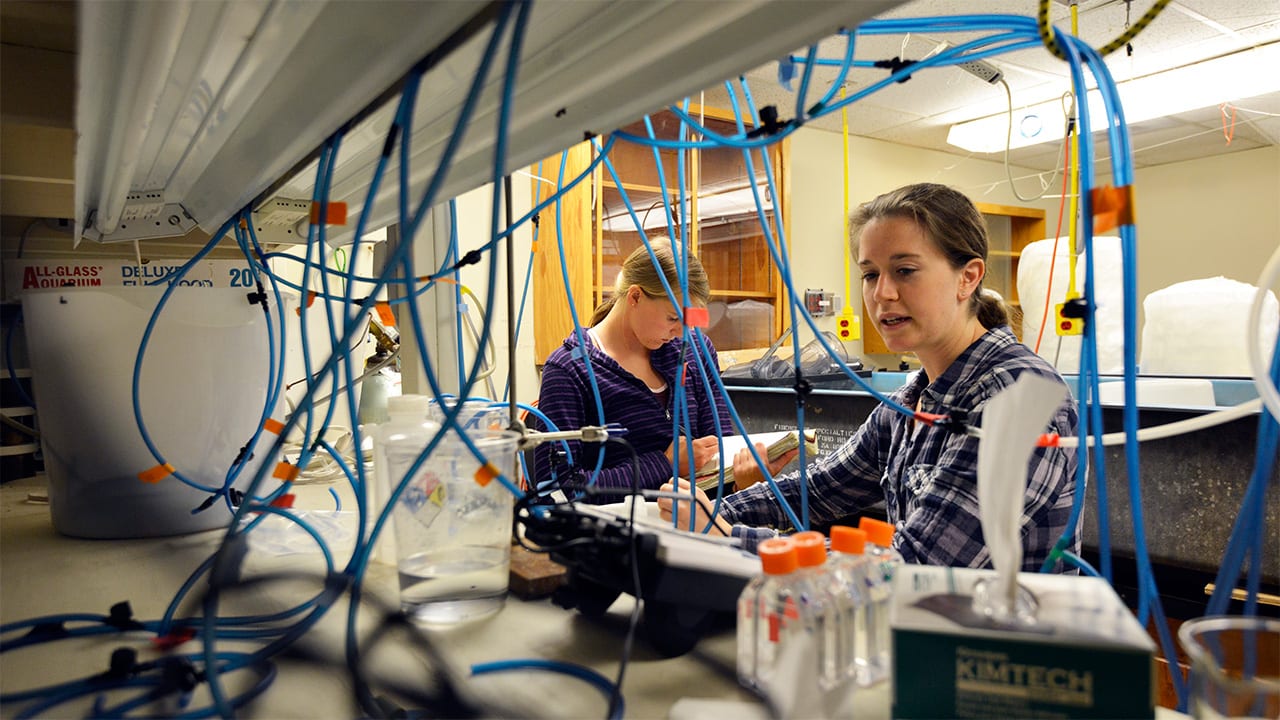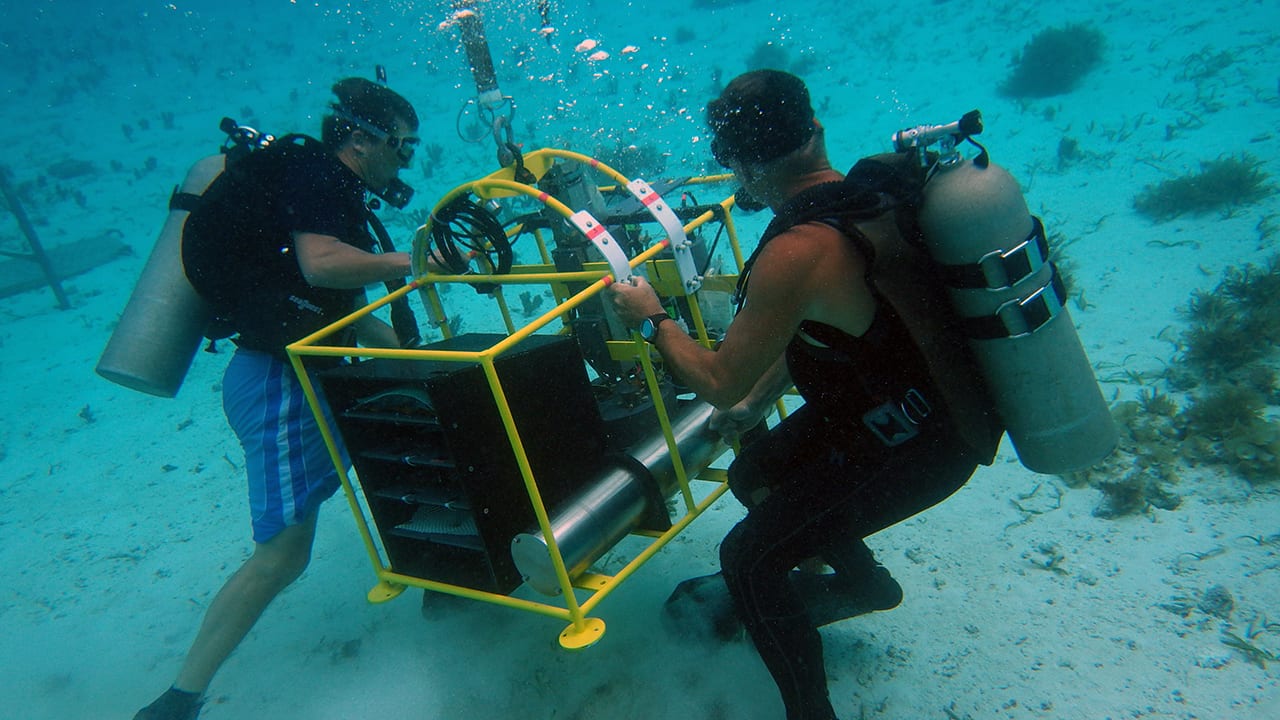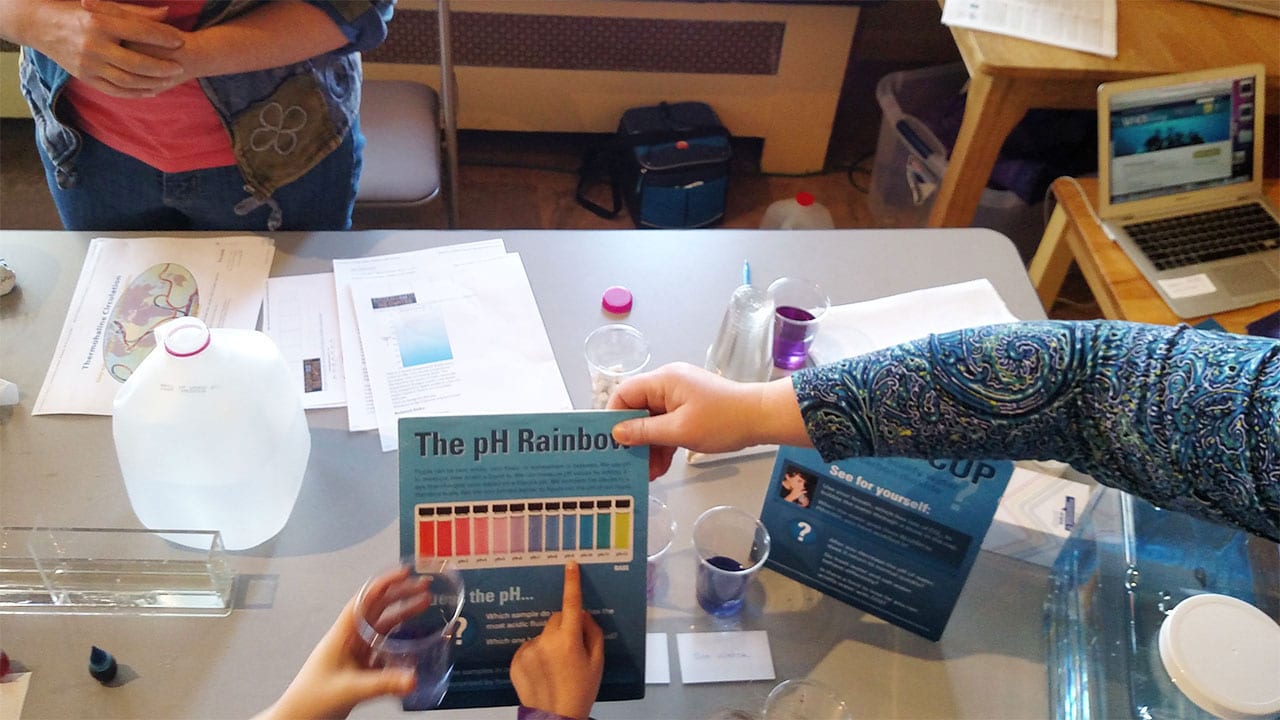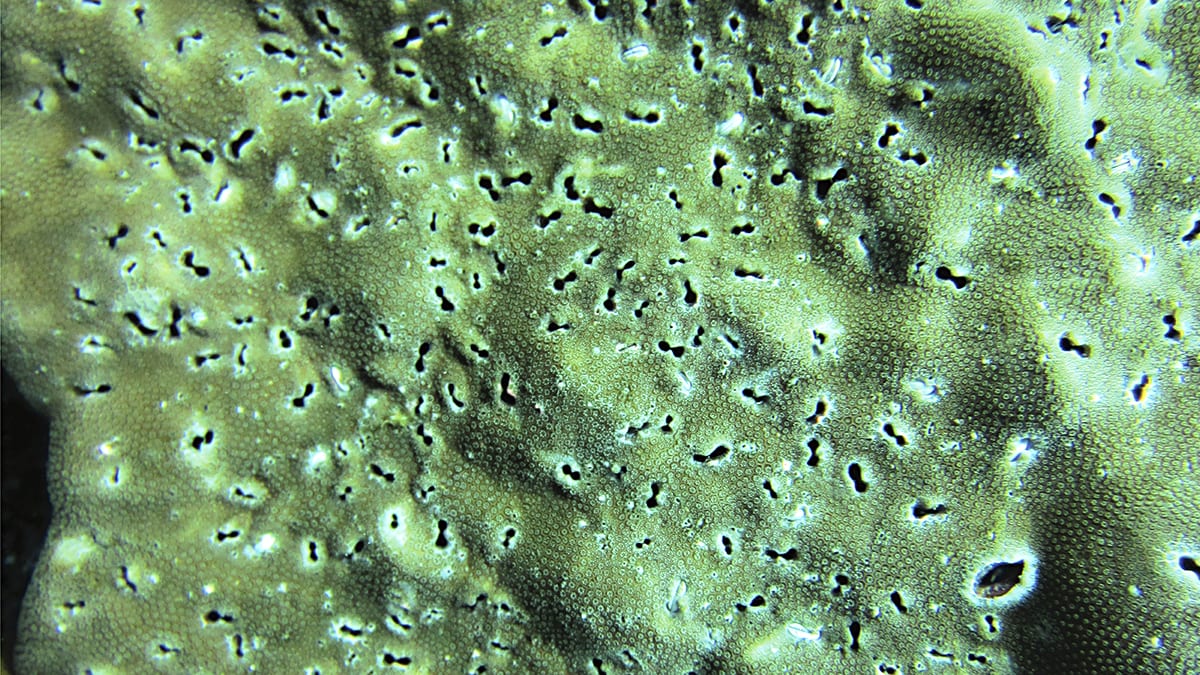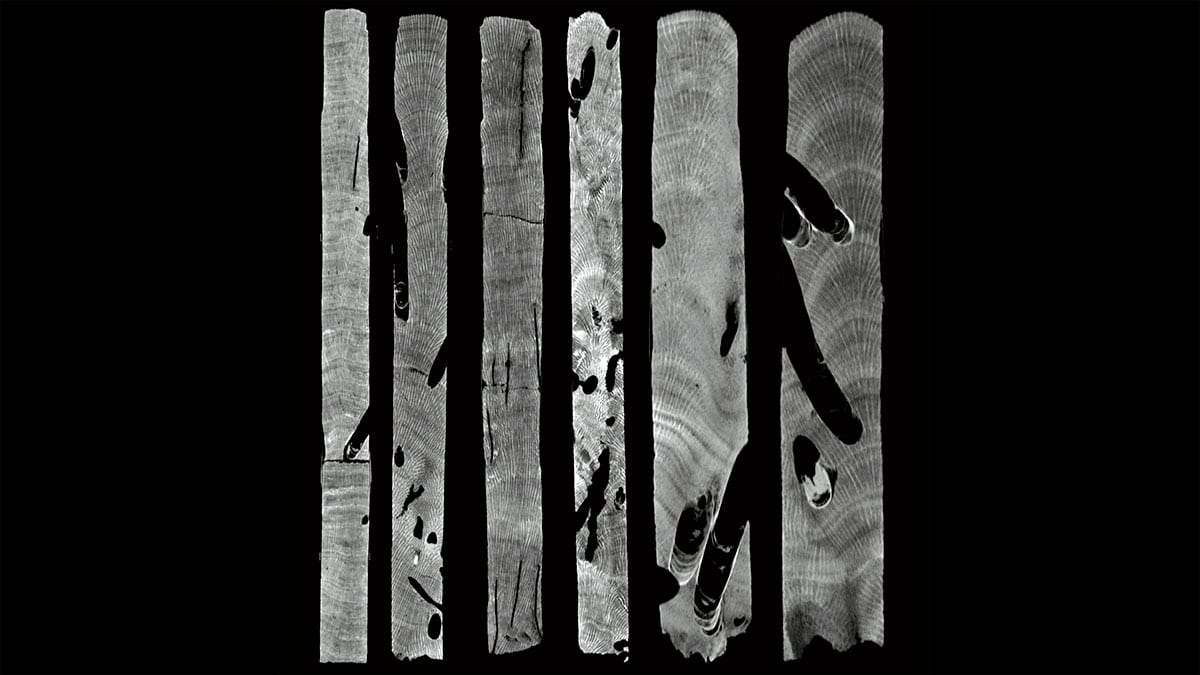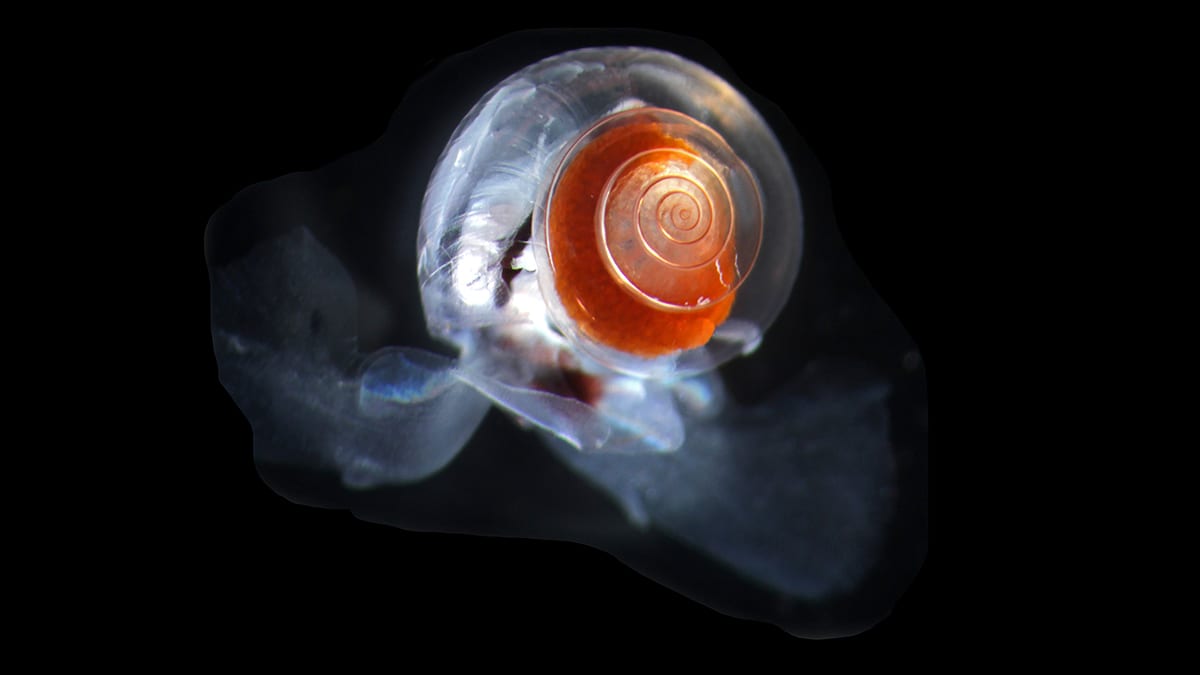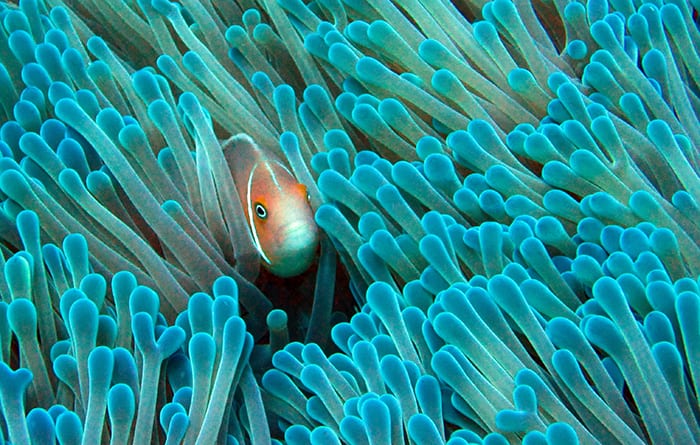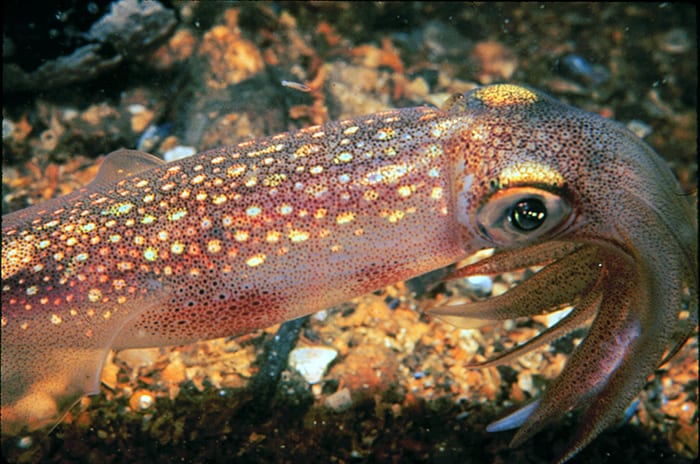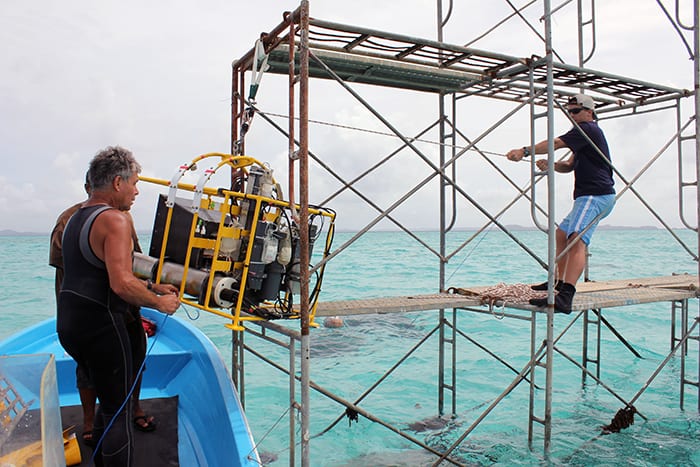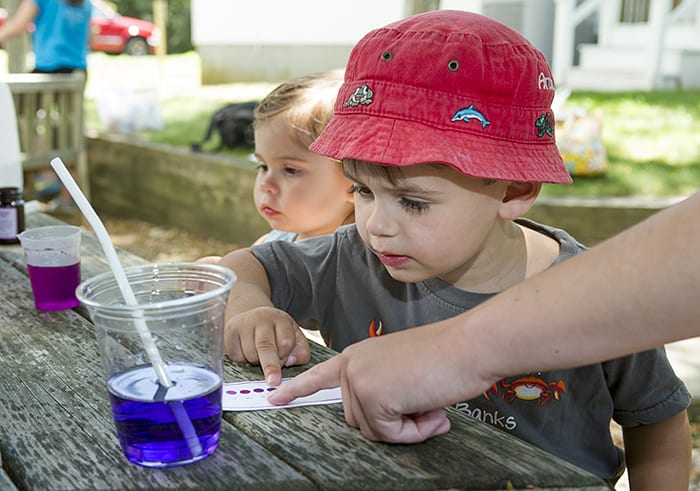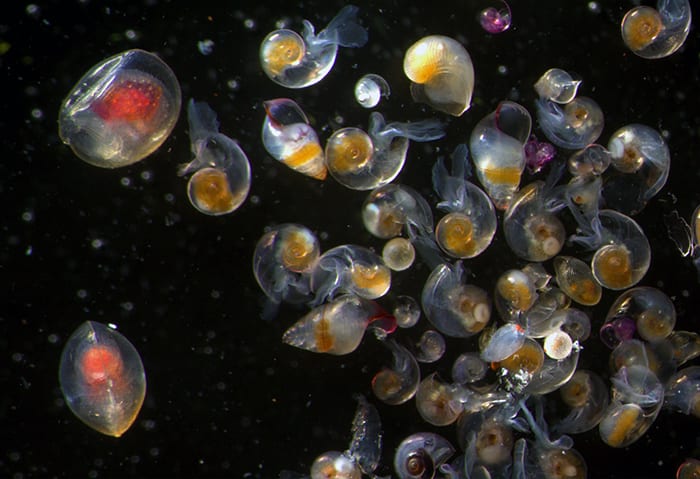Multimedia Items
Hide Out
An anemone fish finds refuge in its namesake location—an anemone. This pair were photographed in the Phoenix Islands Protected Area (PIPA), a place that has drawn attention from scientists for…
Read MoreSkeletons in the Corals
Nathan Mollica (left), a graduate student in the MIT-WHOI Joint Program, and WHOI scientist Weifu Guo examine a sample cored from the skeleton of a coral. They put the cores…
Read MoreCoring Corals
Woods Hole Oceanographic Institution scientist Anne Cohen (left) and Nathan Mollica, a graduate student in the MIT-WHOI Joint Program, extract core samples from a giant Porites coral in Risong Bay, Palau. They and WHOI scientist Weifu Guo were…
Read MoreScallops Under Threat
Atlantic sea scallops are a $500 million annual industry, but WHOI scientists believe they may be in danger. A new model developed by WHOI researcher Jennie Rheuban suggests that as human-induced climate change…
Read MoreFirst Time Out
Postdoctoral investigator Eyal Wurgaft, research assistant Kate Morkeski, and MIT-WHOI Joint Program graduate student Mallory Ringham (left to right) lower the new Channelized Optical System (CHANOS II) instrument into Eel Pond…
Read MoreSquid on the Menu
Loligo pealii, the ordinary squid, is a kind of floating buffet that feeds fish, birds, seals, dolphins, many whales, and even humans. Despite this, scientists know remarkably little about how…
Read MoreCorals Under Threat
A large school of bigeye trevally swim past a submarine carrying WHOI scientists descending in Cabu Pulmo National Park, home of the oldest of only three coral reefs on the…
Read MoreCoral Skeleton Crystals
Former MIT-WHOI Joint Program student Tom DeCarlo holds a vial containing aragonite, a crystal form of calcium carbonate, the mineral that reef-building corals use to build their skeletons. By manipulating…
Read MoreThe Future of Squid
Casey Zakroff, a graduate student in the MIT-WHOI Joint Program, adjusts plastic cups containing squid eggs in seawater with various pH levels. Working with his Ph.D. advisor, Aran Mooney, Zakroff is…
Read MoreEyes on Both Coasts
OceanCube is an autonomous underwater coastal observatory that provides real-time data and images from a variety of biological, physical, and chemical sensors. A team from WHOI led by biologist Scott…
Read MoreUnder Threat
A shell-less pteropod swims under sea ice in Antarctica. Pteropods are small marine snails that use wing-like appendages to “fly” though the water. For that reason, shelled pteropods are commonly…
Read MoreA SEA-worthy Reunion
Four WHOI employees who are alumni of the Sea Education Association’s SEA Semester, found themselves aboard the R/V New Horizon in 2012. From left, mooring technician Meghan Donohue, information systems…
Read MoreAre Reefs Resilient?
Hannah Barkley, a recent graduate of the MIT-WHOI Joint Program, presents her thesis research on coral reef health in the Rock Islands of Palau. Since 2011, Barkley has worked with…
Read MoreSummer Studies
Each summer, undergraduates from around the world come to WHOI to learn about ocean science. The summer fellowship, which started in 1959, gives visiting students the opportunity to get hands-on…
Read MoreWrestling with RATS
On a coral reef off Palau, MIT-WHOI Joint Program graduate student Tom DeCarlo (left) and WHOI geologist Pat Lohmann position a device called “RATS” (Robotic Analyzer for Total CO2 system in…
Read MoreColor and Splash
Children match colors on a chart to the color of water containing a dye to indicating the pH, or acid/alkaline levels, of the water to learn about the widespread problem…
Read MoreHoley Corals
This coral may look like it was blasted by a shotgun, but these holes are occupied by tiny molluscs that bore into coral skeletons to escape predators. This process, called…
Read MoreHidden Battles
These images, which are CT scans similar to those taken at hospitals of the human body, provide a detailed look inside coral skeletons. The holes were made by bioeroders, small…
Read MoreWing-footed Wonders
These tiny marine snails are called pteropods (“wing-foot”), or sometimes “sea butterflies,” because of their winglike swimming appendages. Pteropods are plankton that drift in the ocean, providing food for fish…
Read MoreSafe Haven
An anemone fish finds refuge in its namesake location–an anemone. This pair were photographed in the Phoenix Islands Protected Area (PIPA), a place that has drawn attention from scientists of…
Read MoreSerene Squid
Squid such as this Dortyteuthis pealeii are common prey for many fish, whales, and even humans. WHOI researchers have studied how whales use sonar to find squid, how humans might…
Read MoreCoral RATS
WHOI geologist Pat Lohmann and MIT-WHOI Joint Program graduate student Tom DeCarlo deploy the RATS (Robotic Analyzer of the Total carbon dioxide System) sampler from scaffolding they built between coral…
Read MoreScience is Fun
Two young visitors enjoyed learning about ocean acidification at the WHOI Ocean Science Exhibit Center during a Splash Lab this summer. With exhibits geared for all ages the Center is…
Read MoreSea Butterflies
These marine snails are called pteropods (from the Greek words meaning “wing foot”) or “sea butterflies” because of their winglike swimming appendages. Masses of pteropods drift with currents in the…
Read More
